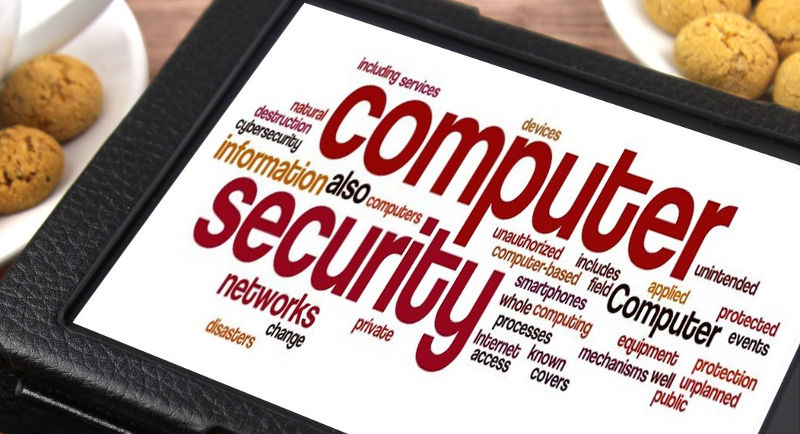Staying safe online isn’t as difficult as you think…
We’re often asked by friends and family, what are the top tips for computer safety – and we’ve distilled our advice down into 5 “top-tips for online safety” – these are those 5-tip:
1: Update, update and update again…
Updating the software systems on your computer is not optional. You should not put it off. Updates you need to perform regularly include the operating system and ‘high risk’ program, as an absolute necessity
We and other experts will tell you that the high-risk programs start with: Adobe Reader, Adobe Flash and Java.
If you don’t download new versions of these programs, then your computer is extremely susceptible to malware.
Updates to your Windows or Mac operating system help address new threats that are patched by the operating system authors, but should not be done without giving a thought to other software found on your machines.
Get into a habit of updating so that it becomes part of your normal computing routine.
2: Password Safety & Embracing a Password Manager
We have written in the past of how important password are, but the continuous stream of news articles on breaches with password leaks, should convince you that it’s long past time to take passwords seriously – our advice can be summed up on this quick 3-step list:
- Make strong passwords.
- Use different passwords for each site.
- Use a password management system to track them all.
When you embrace strong passwords that are not re-used on multiple websites, in the event that one of the sites is compromised, you only have to change that one account password. This reduces your exposure to that single site, instead of every website you used that same password.
We happen to use KeePass as our chosen password manager, but there are others. Two of the reasons we like KeePass are that it’s free, and that you can install and update it with Ninite.com.
3: Install malware protection
An antivirus/antimalware solution is essential these days. You can never know for sure if a website you visit, or email you receive is trying to infect your computer. Many zero-day infections can escalate permissions and run without a single click – especially if you have Java, Flash, or open an infected PDF document. That’s because the programs used to open those file-types can infect you without extra click sometimes.
Trojans, viruses, keyloggers, zombie code, spyware, adware and more are continuously finding new ways to make it onto your PC, and a good antivirus/antimalware solution will use a combination of signatures and heuristic (behavior based) detection to determine if you’re infecting your machine – and hopefully stop that infection dead.
In the past, we’ve heard Macintosh users say “macs don’t get viruses” – and we hate to break that myth – as it’s simply not the case any more… Macs have vulnerabilities and a solid Mac AV is required these days.
4: Back it up – Local only is not sufficient
If your computer is damaged, lost or stolen – your backup is the solution. If you’re infected badly enough that cleanup is either impossible, or simply not economical – backup is the solution. If you’re hit by a cryptolocker, and your data is largely encrypted, again, backup is the solution… more precisely, restore from backup is the solution to all these issues.
If your office is consumed by fire – or flood – or if you’re subjected to burglary and your backup is on the hard drive plugged into the USB port, do you really think that backup will help? We’re fairly sure it won’t. This is why a hybrid backup is a good answer – local versions for fast recovery, and cloud backups for extra retention and resilience.
It’s important to consider how effective your backup is at versioning, because we’ve heard of situations where an infection was not detected until all previous backups had been overwritten with encrypted data!!
Generally speaking, the consumer grade backups aren’t as good at versioning and retention of previous version of your data, and the more enterprise grade solutions are – but these also need to be setup properly.
Choosing a backup solution isn’t as simple as grabbing the one you hear on radio or tv the most – it’s far more important to get an idea of your retention requirements, and we can help you decide on a solid and affordable backup (and Disaster Recovery) solution.
5: Consider uninstalling or crippling Java
Java is a program that websites used to incorporate into their systems, but is not so frequently used now. Continuous security holes allowing malware to infect computers through Java makes it no longer safe to leave it on your system unless you absolutely need it.
The Department of Homeland Security has recommended removing Java from your computer or, at least, disabling it in your browser. We recommend as an absolute minimum, disabling Java in the browser – here’s how to do that.
We posted a step-by-step guide to identifying if your system has Java installed and how to update Java manually – but if you can, simply remove Java. We cannot stress enough the importance of uninstalling Java for the health and security of your computer.
We would also recommend that you uninstall Adobe Flash… that’s technically a 6th top-tip.. 😀

